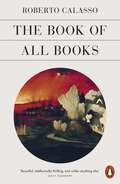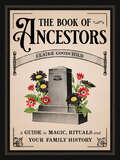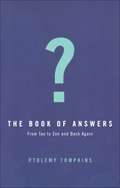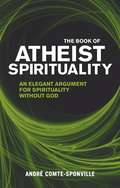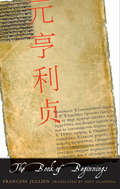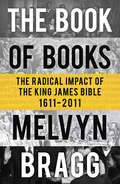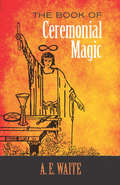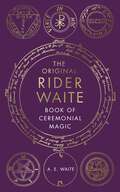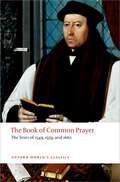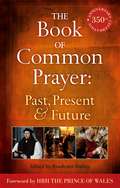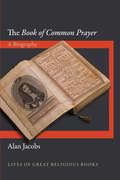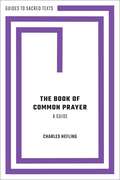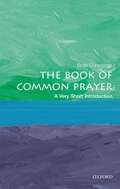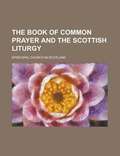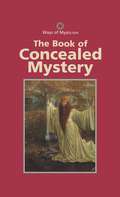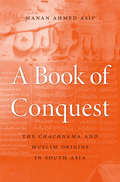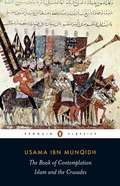- Table View
- List View
The Book of All Books
by Roberto CalassoA splendid reimagining of key stories from the Bible, by the author of The Marriage of Cadmus and Harmony.A man named Saul is sent to search for some lost donkeys and on the way is named king of his people. The queen of a remote African realm travels for three years with her multitudinous retinue to meet the king of Jerusalem and pose him a few riddles. A man named Abraham hears a divine voice speaking words that reverberate throughout the Bible: 'Go away from your land, from your kindred and from the house of your father toward the land that I will show you'.In The Book of All Books, Roberto Calasso weaves together stories of promise and separation from one of the founding texts of Western civilisation. These tales of grace and guilt, of the chosen and the damned, cast many Biblical figures and indeed the whole book in a light as astonishing as it is disquieting.The Book of All Books is part of a larger work which began with The Ruin of Kasch (1983) and includes The Marriage of Cadmus and Harmony, Ka, and The Celestial Hunter.
The Book of Ancestors: A Guide to Magic, Rituals, and Your Family History
by Claire GoodchildFind spiritual healing and everyday magic in this beautifully mysterious guide to communing with your ancestors. Picking up where The Book of Séances left off, artist, author, and witch Claire Goodchild delivers a guide that is truly the first of its kind: The Book of Ancestors, a map for seekers looking to develop a relationship with their ancestors. Through a combination of text and illustration, The Book of Ancestors explores the history of traditional genealogy topics, such as &“how to research and build a family tree&” and &“the history of cemeteries.&” Alongside these practical measures, Claire provides rituals, spells, and crafts from her own personal practice, drawing on the British and Slavic traditions of her heritage, alongside contributions from fellow witches including Codi Popovich and Marjorie from The Punk Priestess for a broader, more enriched lens. As the text progresses, Claire guides her readers through the creation their own &“Book of Ancestors,&” a family grimoire of sorts, blending together their own ancestral legacies with witchcraft that can be passed down to future family. Visually, The Book of Ancestors pairs with The Book of Seances, containing witchy, esoteric, and funerary images in a Victorian style with lots of floral embellishments and classic colors. Whether a seasoned witch, or a newcomer to the spirit world, readers will walk away from The Book of Ancestors feeling empowered to perform their own rituals and spells, research family history, and form a lasting relationship with those who came before.
The Book of Answers: Getting Wise In A Wisdom-crazy World
by Ptolemy TompkinsHaving absorbed many books of wisdom such as the "Tao Te Ching" and "Secrets of the Great Pyramids", the author set out to turn the genre on its head with this title. Rather than presenting the same world-wise instructions on life, the author filters this material through his own experiences.
The Book of Atheist Spirituality
by Andre Comte-SponvilleCan we do without religion? Can we have ethics without God? Is there such thing as 'atheistic spirituality'? In this powerful book, the internationally bestselling author André Comte-Sponville presents a philosophical exploration of atheism - and reaches startling conclusions. Atheists, Comte-Sponville argues, are no less interested in a spiritual life than religious believers. But by allowing the concept of spirituality to become intertwined with religion and dogma, humanity has lost touch with the nature of a true spiritual existence. Using rigorous, reasoned arguments and clear, concise, and often humorous prose Comte-Sponville draws on both Eastern and Western philosophical traditions to propose the atheistic alternative to religion, based on the human need to connect to each other and to the universe. In doing so, he offers a convincing treatise on a new form of spiritual life.
The Book of Beginnings (The Margellos World Republic of Letters)
by François JullienHow can a person from a Western culture enter into a way of thinking as different as that of the Chinese? Can a person truly escape from his or her own cultural perspectives and assumptions? French philosopher François Jullien has throughout his career explored the distances between European and Chinese thought. In this fascinating summation of his work, he takes an original approach to the conundrum of cross-cultural understanding. Jullien considers just three sentences in their original languages. Each is the first sentence of a seminal text: the Bible in Hebrew, Hesiod’s Theogony in Greek, and the I Ching in Chinese. By dismantling these sentences, the author reveals the workings of each language and the ways of thought in which they are inscribed. He traces the hidden choices made by European reason and assumptions, discovering among other things what is not thought about. Through the lens of the Chinese language, Jullien offers, as always, a new and surprising view of our own Western culture.
The Book of Books: The Radical Impact of the King James Bible
by Melvyn BraggThe Sunday Times Top Ten bestseller celebrating 400 years of the King James Bible.The King James Bible has often been called the Book of Books both in itself and in what it stands for. Since its publication in 1611 it has been the best selling book in the world, and many believe, had the greatest impact. The King James Bible has spread the Protestant faith. It has also been the greatest influence on the enrichment of the English language and its literature. It has been the Bible of wars from the British Civil War in the seventeenth century to the American Civil War two centuries later and it has been carried into battle in innumerable conflicts since then. Its influence on social movements - particularly involving women in the nineteenth and twentieth centuries - and politics was profound. It was crucial to the growth of democracy. It was integral to the abolition of slavery and it defined attitudes to modern science, education and sex. As THE ADVENTURE OF ENGLISH explored the history of our language, so THE BOOK OF BOOKS reveals the extraordinary and still-felt impact of a work created over 400 years ago.
The Book of Ceremonial Magic
by A. E. WaiteNoted occult historian A. E. Waite created this meticulously researched survey in order to unite and interpret the scattered and often-inaccessible details of magical traditions. Part I contains essential passages from prominent magical texts dating from the fourteenth, fifteenth, and sixteenth centuries; Part II analyzes these texts from a modern perspective. A century after its debut, Waite's work remains among the best sources of information on occult subjects related to the study of the supernatural. Although the author does not condone the practice of black magic, he defends occult practitioners and praises the disciplines of astrology and alchemy. Modern readers will find this book an extraordinarily complete tour of the history of magic, replete with details of casting spells, conjuring spirits, and other occult practices.
The Book Of Ceremonial Magic: A Visual Companion To The Rider Waite Tarot
by A.E. WaiteFrom renowned scholar of the occult and creator of the world-famous Rider Waite Tarot Deck, A E Waite comes a new edition of his landmark book on magic. Featuring the original intricate illustrations, The Book of Ceremonial Magic offers an in-depth exploration of the darker side of grimoire, ceremony, demons and spirits.This is a spellbinding book for anyone interested in the grotesque detail of black magic and the ceremonies and rituals that surrounded it. With whole chapters dedicated to describing how early incarnations of the occult prepared to engage with demons, this book will illustrate the deeper historical context of esoteric arts and the development of the occult, setting the context for how we perceive and understand magic today.
The Book Of Common Prayer: The Texts of 1549, 1559, and 1662 (Very Short Introductions Ser.)
by Brian Cummings'In the midst of life we are in death.' The words of the Book of Common Prayer have permeated deep into the English language all over the world. For nearly 500 years, and for countless people, it has provided a background fanfare for a marriage or a funeral march at a burial. Yet this familiarity also hides a violent and controversial history. When it was first produced the Book of Common Prayer provoked riots and rebellion, and it was banned before being translated into a host of global languages and adopted as the basis for worship in the USA and elsewhere to the present day. This edition presents the work in three different states: the first edition of 1549, which brought the Reformation into people's homes; the Elizabethan prayer book of 1559, familiar to Shakespeare and Milton; and the edition of 1662, which embodies the religious temper of the nation down to modern times. 'magnificent edition' Diarmaid MacCulloch,London Review of Books 'superb edition...excellent notes and introduction' Rowan Williams, Times Literary Supplement ABOUT THE SERIES: For over 100 years Oxford World's Classics has made available the widest range of literature from around the globe. Each affordable volume reflects Oxford's commitment to scholarship, providing the most accurate text plus a wealth of other valuable features, including expert introductions by leading authorities, helpful notes to clarify the text, up-to-date bibliographies for further study, and much more.
The Book of Common Prayer: A 350th Anniversary Celebration
by Prudence DaileyThe words of The Book of Common Prayer have worked their way deeply into the hearts and minds of English-speaking people, second only to the English Bible and the works of Shakespeare. This collection of essays seeks not only to explore and commemorate the Book of Common Prayer's influence in the past but also to commend it for present use, and as an indispensable part of the Church's future -- both as a working liturgy and as the definitive source of Anglican doctrine.
The Book of Common Prayer: A 350th Anniversary Celebration
by Prudence DaileyThe words of The Book of Common Prayer have worked their way deeply into the hearts and minds of English-speaking people, second only to the English Bible and the works of Shakespeare. This collection of essays seeks not only to explore and commemorate the Book of Common Prayer's influence in the past but also to commend it for present use, and as an indispensable part of the Church's future -- both as a working liturgy and as the definitive source of Anglican doctrine.
The "Book of Common Prayer": A Biography
by Alan JacobsWhile many of us are familiar with such famous words as, "Dearly beloved, we are gathered together here. . ." or "Ashes to ashes, dust to dust," we may not know that they originated with The Book of Common Prayer, which first appeared in 1549. Like the words of the King James Bible and Shakespeare, the language of this prayer book has saturated English culture and letters. Here Alan Jacobs tells its story. Jacobs shows how The Book of Common Prayer--from its beginnings as a means of social and political control in the England of Henry VIII to its worldwide presence today--became a venerable work whose cadences express the heart of religious life for many. The book's chief maker, Thomas Cranmer, Archbishop of Canterbury, created it as the authoritative manual of Christian worship throughout England. But as Jacobs recounts, the book has had a variable and dramatic career in the complicated history of English church politics, and has been the focus of celebrations, protests, and even jail terms. As time passed, new forms of the book were made to suit the many English-speaking nations: first in Scotland, then in the new United States, and eventually wherever the British Empire extended its arm. Over time, Cranmer's book was adapted for different preferences and purposes. Jacobs vividly demonstrates how one book became many--and how it has shaped the devotional lives of men and women across the globe.
The "Book of Common Prayer": A Biography
by Alan JacobsWhile many of us are familiar with such famous words as, "Dearly beloved, we are gathered together here. . ." or "Ashes to ashes, dust to dust," we may not know that they originated with The Book of Common Prayer, which first appeared in 1549. Like the words of the King James Bible and Shakespeare, the language of this prayer book has saturated English culture and letters. Here Alan Jacobs tells its story. Jacobs shows how The Book of Common Prayer--from its beginnings as a means of social and political control in the England of Henry VIII to its worldwide presence today--became a venerable work whose cadences express the heart of religious life for many. The book's chief maker, Thomas Cranmer, Archbishop of Canterbury, created it as the authoritative manual of Christian worship throughout England. But as Jacobs recounts, the book has had a variable and dramatic career in the complicated history of English church politics, and has been the focus of celebrations, protests, and even jail terms. As time passed, new forms of the book were made to suit the many English-speaking nations: first in Scotland, then in the new United States, and eventually wherever the British Empire extended its arm. Over time, Cranmer's book was adapted for different preferences and purposes. Jacobs vividly demonstrates how one book became many--and how it has shaped the devotional lives of men and women across the globe.
The Book of Common Prayer: A Biography (Lives of Great Religious Books #18)
by Alan JacobsWhile many of us are familiar with such famous words as, "Dearly beloved, we are gathered together here. . ." or "Ashes to ashes, dust to dust," we may not know that they originated with The Book of Common Prayer, which first appeared in 1549. Like the words of the King James Bible and Shakespeare, the language of this prayer book has saturated English culture and letters. Here Alan Jacobs tells its story. Jacobs shows how The Book of Common Prayer--from its beginnings as a means of social and political control in the England of Henry VIII to its worldwide presence today--became a venerable work whose cadences express the heart of religious life for many. The book's chief maker, Thomas Cranmer, Archbishop of Canterbury, created it as the authoritative manual of Christian worship throughout England. But as Jacobs recounts, the book has had a variable and dramatic career in the complicated history of English church politics, and has been the focus of celebrations, protests, and even jail terms. As time passed, new forms of the book were made to suit the many English-speaking nations: first in Scotland, then in the new United States, and eventually wherever the British Empire extended its arm. Over time, Cranmer's book was adapted for different preferences and purposes. Jacobs vividly demonstrates how one book became many--and how it has shaped the devotional lives of men and women across the globe.
The Book of Common Prayer: A Biography (Lives of Great Religious Books #18)
by Alan JacobsWhile many of us are familiar with such famous words as, "Dearly beloved, we are gathered together here. . ." or "Ashes to ashes, dust to dust," we may not know that they originated with The Book of Common Prayer, which first appeared in 1549. Like the words of the King James Bible and Shakespeare, the language of this prayer book has saturated English culture and letters. Here Alan Jacobs tells its story. Jacobs shows how The Book of Common Prayer--from its beginnings as a means of social and political control in the England of Henry VIII to its worldwide presence today--became a venerable work whose cadences express the heart of religious life for many. The book's chief maker, Thomas Cranmer, Archbishop of Canterbury, created it as the authoritative manual of Christian worship throughout England. But as Jacobs recounts, the book has had a variable and dramatic career in the complicated history of English church politics, and has been the focus of celebrations, protests, and even jail terms. As time passed, new forms of the book were made to suit the many English-speaking nations: first in Scotland, then in the new United States, and eventually wherever the British Empire extended its arm. Over time, Cranmer's book was adapted for different preferences and purposes. Jacobs vividly demonstrates how one book became many--and how it has shaped the devotional lives of men and women across the globe.
The Book of Common Prayer: The Texts of 1549, 1559, and 1662 (Oxford World's Classics)
'In the midst of life we are in death.' The words of the Book of Common Prayer have permeated deep into the English language all over the world. For nearly 500 years, and for countless people, it has provided a background fanfare for a marriage or a funeral march at a burial. Yet this familiarity also hides a violent and controversial history. When it was first produced the Book of Common Prayer provoked riots and rebellion, and it was banned before being translated into a host of global languages and adopted as the basis for worship in the USA and elsewhere to the present day. This edition presents the work in three different states: the first edition of 1549, which brought the Reformation into people's homes; the Elizabethan prayer book of 1559, familiar to Shakespeare and Milton; and the edition of 1662, which embodies the religious temper of the nation down to modern times. 'magnificent edition' Diarmaid MacCulloch,London Review of Books 'superb edition...excellent notes and introduction' Rowan Williams, Times Literary Supplement ABOUT THE SERIES: For over 100 years Oxford World's Classics has made available the widest range of literature from around the globe. Each affordable volume reflects Oxford's commitment to scholarship, providing the most accurate text plus a wealth of other valuable features, including expert introductions by leading authorities, helpful notes to clarify the text, up-to-date bibliographies for further study, and much more.
The Book of Common Prayer: A Guide (Guides to Sacred Texts)
by Charles HeflingThe Book of Common Prayer is a remarkable book, a sacred book in more than one sense. It is primarily a liturgical text, meant to be used in corporate worship, and at the same time a literary landmark, a cultural icon, and a focus of identity for Anglican Christianity. This brief, accessible account of the Prayer Book, as it is often called, describes the contents of the classical version of the text, with special emphasis on the services for which it has been used most frequently since it was issued in 1662. Charles Hefling also examines the historical and theological context of the Prayer Book's origins, the changes it has undergone, the controversies it has touched off, and its reception in England, Scotland, and America. Readers are introduced to the political as well as the spiritual influence of the Book of Common Prayer, and to its enduring place in English-speaking religion.
The Book of Common Prayer: A Very Short Introduction (Very Short Introductions)
by Brian CummingsThe Book of Common Prayer is one of the most influential books in history. First published in the reign of Edward VI, in 1549, it was a product of the English Reformation following the break with Rome. For nearly five centuries, it has formed the order of worship for established Christianity in England. More listeners have heard these prayers, it is said, than the soliloquies of Shakespeare. As British imperial ambitions spread, the Book of Common Prayer became the primary instrument (at least as much as the King James Bible) of English culture, firstly in Ireland in 1551. When the Puritans fled to America in 1620 it was to escape the discipline imposed by of the Book of Common Prayer, yet the book came to embody official religion in America before and after Independence, and is still in use. Today it is a global book: it was the first book printed in many languages, from north America to southern Africa, to the Indian sub-continent. In this Very Short Introduction Brian Cummings tells the fascinating history of the Book of Common Prayer, and explains why it is easily misunderstood. Designed in the 1540s as a radical Protestant answer to Catholic "superstition", within a century (during the English Civil Wars) radical Christians regarded the Book of Common Prayer as itself "superstitious" and even (paradoxically) "Papist". Changing in meaning and context over time, the Book of Common Prayer has acted as a cultural symbol, affecting the everyday conduct of life as much as the spiritual, and dividing conformity from non-conformity, in social terms as well as religious, from birth to marriage to death. ABOUT THE SERIES: The Very Short Introductions series from Oxford University Press contains hundreds of titles in almost every subject area. These pocket-sized books are the perfect way to get ahead in a new subject quickly. Our expert authors combine facts, analysis, perspective, new ideas, and enthusiasm to make interesting and challenging topics highly readable.
The Book of Common Prayer: A Very Short Introduction (Very Short Introductions)
by Brian CummingsThe Book of Common Prayer is one of the most influential books in history. First published in the reign of Edward VI, in 1549, it was a product of the English Reformation following the break with Rome. For nearly five centuries, it has formed the order of worship for established Christianity in England. More listeners have heard these prayers, it is said, than the soliloquies of Shakespeare. As British imperial ambitions spread, the Book of Common Prayer became the primary instrument (at least as much as the King James Bible) of English culture, firstly in Ireland in 1551. When the Puritans fled to America in 1620 it was to escape the discipline imposed by of the Book of Common Prayer, yet the book came to embody official religion in America before and after Independence, and is still in use. Today it is a global book: it was the first book printed in many languages, from north America to southern Africa, to the Indian sub-continent. In this Very Short Introduction Brian Cummings tells the fascinating history of the Book of Common Prayer, and explains why it is easily misunderstood. Designed in the 1540s as a radical Protestant answer to Catholic "superstition", within a century (during the English Civil Wars) radical Christians regarded the Book of Common Prayer as itself "superstitious" and even (paradoxically) "Papist". Changing in meaning and context over time, the Book of Common Prayer has acted as a cultural symbol, affecting the everyday conduct of life as much as the spiritual, and dividing conformity from non-conformity, in social terms as well as religious, from birth to marriage to death. ABOUT THE SERIES: The Very Short Introductions series from Oxford University Press contains hundreds of titles in almost every subject area. These pocket-sized books are the perfect way to get ahead in a new subject quickly. Our expert authors combine facts, analysis, perspective, new ideas, and enthusiasm to make interesting and challenging topics highly readable.
The Book of Common Prayer / and The Scottish Liturgy
by Episcopal Church in ScotlandPrayerbook of the Episcopal Church in Scotland
BOOK OF COMMON PRAYER GST C: A Worldwide Survey (Guides to Sacred Texts)
by Charles HeflingThe Book of Common Prayer is a remarkable book, a sacred book in more than one sense. It is primarily a liturgical text, meant to be used in corporate worship, and at the same time a literary landmark, a cultural icon, and a focus of identity for Anglican Christianity. This brief, accessible account of the Prayer Book, as it is often called, describes the contents of the classical version of the text, with special emphasis on the services for which it has been used most frequently since it was issued in 1662. Charles Hefling also examines the historical and theological context of the Prayer Book's origins, the changes it has undergone, the controversies it has touched off, and its reception in England, Scotland, and America. Readers are introduced to the political as well as the spiritual influence of the Book of Common Prayer, and to its enduring place in English-speaking religion.
The Book of Concealed Mystery
by ContinuumThis is a book of the key text of the Kabbalah, a work known as the Zohar ("Splendour"). The Zohar is a commentary on the Torah and although it is sometimes ascribed to a second-century rabbi, Simon Bar-Yochai, the form in which it is most widely known originates with Moses of Leon, a native of Granada, who died in 1305.The kabbalists believe that the undefinable origin of all things is Ein Sof - the cause of causes, the infinite, that which underlies everything. The universe emanates from the divine in successive layers called esefiroti. Everything exists in God, but God extends infinitely beyond existence. All we know and are is linked together, pervaded and maintained by the divine. According to this work, the light of God must be concealed in order to be revealed to creation. Even though the kabbalists believe that ultimately Ein Sof is beyond expression or understanding, the contemplation of God's presence in all things causes our thoughts to be purified.
A Book of Conquest: The Chachnama And Muslim Origins In South Asia
by Manan Ahmed AsifManan Ahmed Asif shows that the Chachnama is a sophisticated work of political theory, embedded in both the Indic and Islamic ethos. His social and intellectual history of this text offers an important corrective to the divisions between Muslim and Hindu that so often define Pakistani and Indian politics today.
A Book of Conquest: The Chachnama And Muslim Origins In South Asia
by Manan Ahmed AsifManan Ahmed Asif shows that the Chachnama is a sophisticated work of political theory, embedded in both the Indic and Islamic ethos. His social and intellectual history of this text offers an important corrective to the divisions between Muslim and Hindu that so often define Pakistani and Indian politics today.
The Book of Contemplation: Islam and the Crusades
by Usama Ibn MunqidhThe volume comprises lightly annotated translation of a key medieval Arabic text that bears directly on the Crusades and Crusader society and the Muslim experience of them.
